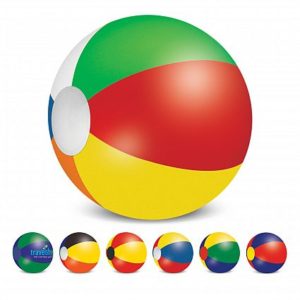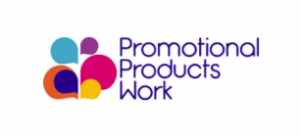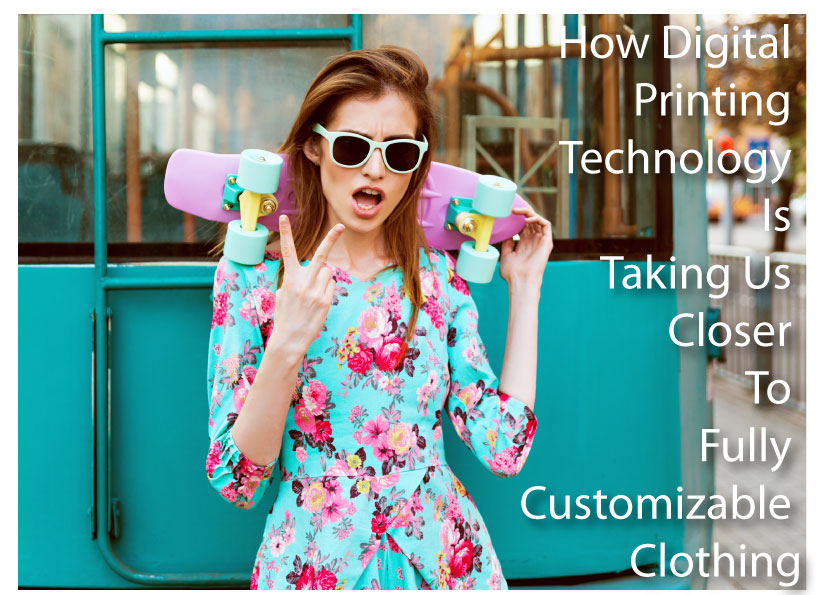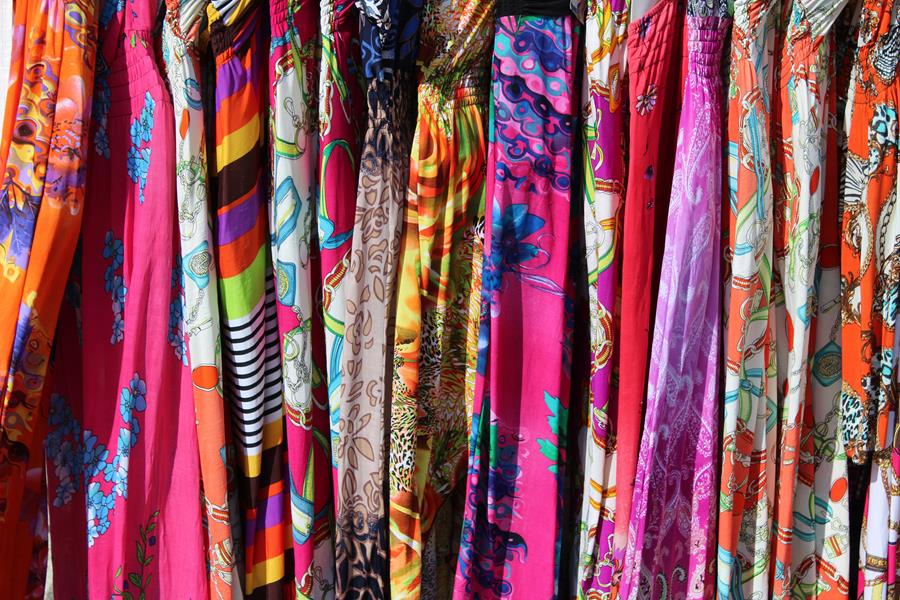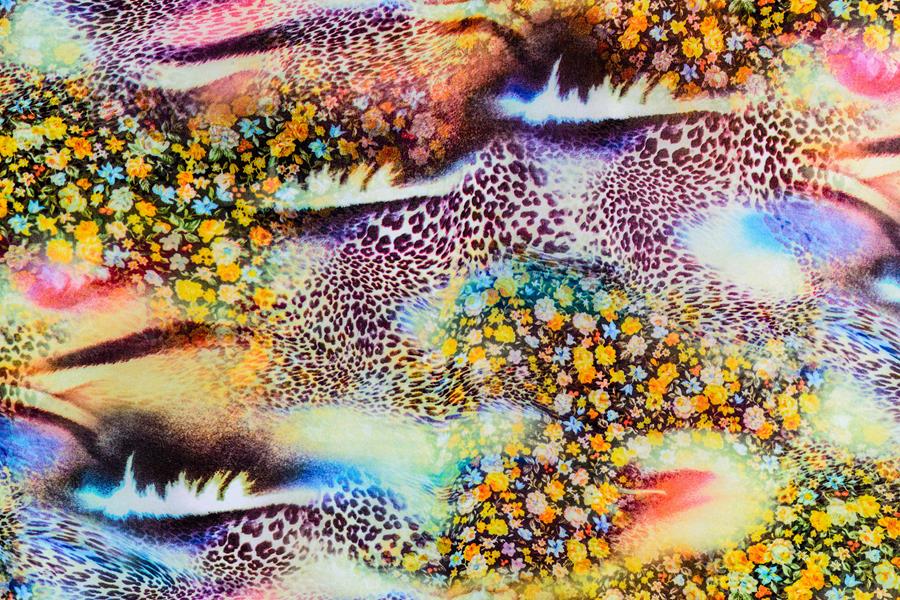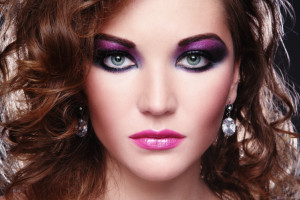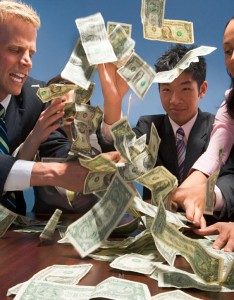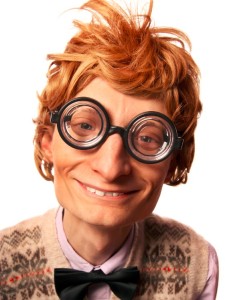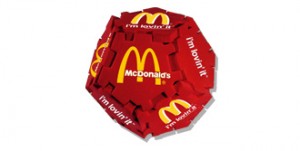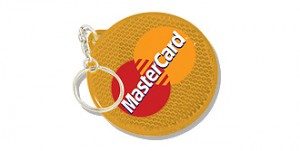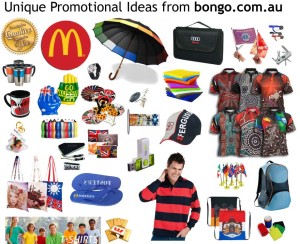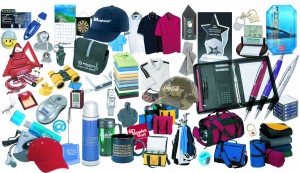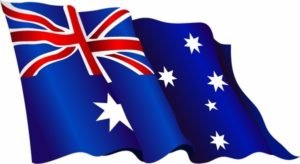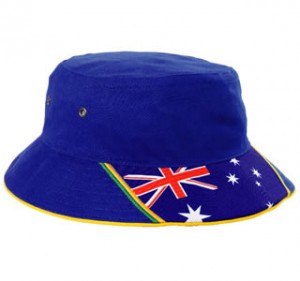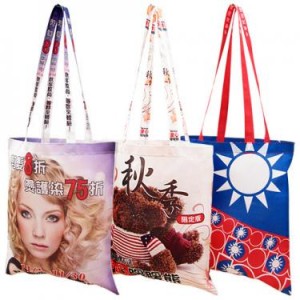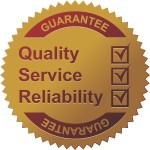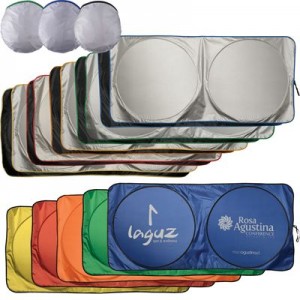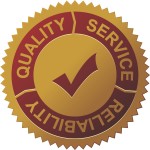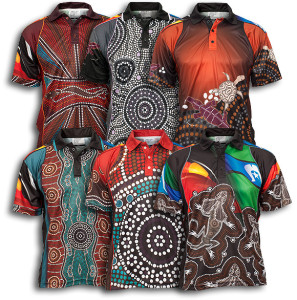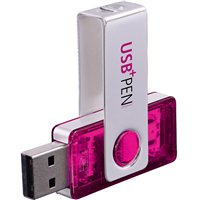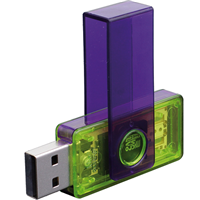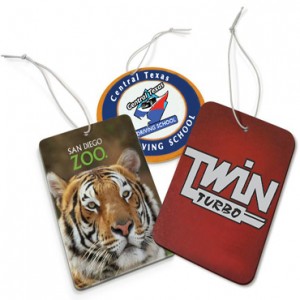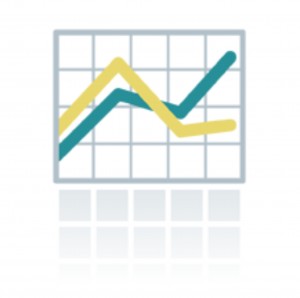Promotional Products To Perk Up the Summer Fun
Summer season is synonymous with vacations, fishing trips, bar-be-cues, beaches, swimming and general outdoor activities. It is the end of school term and the beginning of a fun-filled time; for being out in the sun and enjoying the radiance of the weather. Summer is the time of the year that everybody loves and cherishes to be together with family and friends. It is also a good time for the marketers to take advantage and make their place in the minds of their existing and prospective customers. There is a volley of promo product ideas by way of which promoters can satisfy and thank their customers during the hot season.
Apparel ideas – For those long sunny days at the beach or playing volleyball or football match, present your customers with baseball caps and sun visors with your company logo and message. Cool colored t-shirts would be ideal for golf fans.
Picnic ideas – You can gift your customer picnic coolers and blankets for a perfect day out in the summer sun. For those backyard barbecue parties, you can offer customized barbecue gear or accessories.
Outdoor ideas – Some fun ideas for enjoying outdoor sports could be flying discs, boomerangs, kites. For those beach parties, you can offer beach bags, towels or robes. Other good ideas would be suntan and sun-protection lotions, sunglasses and water bottles for a great sunny day.
Skin protection ideas – Lip balms and high SPF lotions are perfect ideas for protection against the sun. Moisturizing sprays throwing a refreshing mist work well to cool off the heat. Add your company logo to these products and your customers will be reminded of you during their repeated use o beat the harsh sun. Portable, mini hand fans are also a practical promo item for the season, especially it would combine well with the spray bottles.
Sunglasses are a useful promo product which your customer will appreciate during this weather; however, there is a compromise on the imprint space you get to advertise your logo or message. You can achieve your promotional objective by complimenting sunglasses with a cover, clip or holder with your logo imprint on it.
Golfing ideas – For your golfer amateurs and professionals, you can choose from a range of products; from t-shirts to golf balls to wooden tees, golf towels to golf organizers; you will successfully win over the hearts of golf lovers.
Kids’ ideas – You can make your kid customers happy by giving away fling rings, flyers, beach ball or even beach toys.
Gift bags – you can even choose to make gift bags. An example would be one for the beach; including a beach blanket, beach mat, sunglasses and sun protection. Ensure that the bag and all the inclusions come with your logo and carry your business message. Another idea is to offer a wellness and health gift bag which comprises of first aid items, facial tissues, anti-bacterial moist wipes and plasters; to carry for the outdoor activities.
Be proactive and think out of the box to come with some unique ideas to appeal to your customers and stand out from the competition. The summer season is full of opportunities which you can exploit to your best advantage. All you need is to be creative and spend time to think what your customers would appreciate most.
Author:
Julius Rosen has been involved as a direct import specialist with the business gift, premium and advertising specialty industry for over 30 years.
25 Insane (But True) Facts About Promotional Products
If you’re in the business of finding promotional products, you know the impact they can have on an organisation’s marketing efforts. But do you know these fun facts about promotional products?
- Eight in 10 consumers own between one and 10 promotional products.
- Fifty-three percent of these people use a promotional product at least once a week.
- Six in 10 of them keep promotional products for up to two years.
- Only one in five people will trash an unwanted promotional product.
- Before receiving a promotional product, 55 percent of people had done business with the advertiser. After receiving a promotional product, 85 percent of people did business with the advertiser.
- With nearly six thousand impressions, bags generate more impressions than any other promotional product in the U.S.
- Thirty-one percent of U.S. consumers own a promotional bag.
- At one-tenth of a cent, bags tie with writing instruments for the lowest cost per impression of any promotional product in the U.S.
- The first known promotional products – commemorative buttons – trace back to 1789 when George Washington was elected president.
- Fifty-three percent of the time, promotional products create a more favorable impression of the advertiser.
- Forty-eight percent of consumers would like to receive promotional products more often.
- Consumers hang on to promotional products for an average of 6.6 months.
- Sixty-nine percent of consumers would pick up a promotional product if they deemed it useful.
- Sixty-three percent of consumers pass along the promotional products they no longer wish to keep.
- Eighty-nine percent of consumers can recall the advertiser of a promotional product they’d received in the last two years.
- Ninety-one percent of consumers have at least one promotional product in their kitchen, 74 percent have at least one in their workspace, 55 percent have at least one in their bedroom.
- Seventy-seven percent of consumers say a promotional product’s usefulness is the number-one reason to keep it, with health and safety products, computer products and writing instruments ranked as the most useful.
- The top five buyers of promotional products are clients in education, finance, not-for-profit, healthcare, and construction.
- Wearables are the top product category, followed by writing instruments, bags, calendars and drinkware.
- The first promotional product tradeshow was held in 1914 – there were 32 exhibitors.
- Women are more likely to have bags, writing instruments and calendars, whereas men are more likely to own shirts and caps.
- Ownership of logoed outerwear is highest in the Midwest, with 15 percent of people owning an item.
- Logoed mugs in particular are more effective advertising than radio and television spots; 57 percent of people were able to recall the advertiser on a mug, versus 32 percent of radio and 28 percent of T.V.
- Adding a promotional product to the media mix increases the effectiveness of other media by up to 44 percent.
- Promotional products draw as many as 500 percent more referrals from satisfied customers than an appeal letter alone.
Are you still skeptical about the power or promotional products?
With thanks to PPAI
Digital Printing Technology
How Digital Printing Technology is taking us closer to fully customizable clothing. The future of fashion, according to Epson, is all about customization. From the prints and colors we choose to wear, to indeed the size and shape that best suits us.
Tie together digital printing, a bit of artificial intelligence and some robotics on the end, and it’s a vision that’s not too far off, which is precisely what the technology company is hoping to help make possible on all accounts.
Its senior team, including global president Minoru Usui, was in New York last week to host its third annual “Digital Couture” event. This saw 13 design teams from across North and Latin America leveraging Epson’s dye-sublimation and direct-to-fabric printing technology to create small collections that were presented during an evening event held ahead of New York Fashion Week. The occasion also served to officially introduce the fact Epson acquired Italian textile printer manufacturer Robustelli in 2016.
“This event is an opportunity to underscore Epson’s commitment to the industry, and to showcase the increasing impact of digital technologies on innovation in the world of fashion,” says Usui. “Working with [Robustelli], Epson has helped drive the shift to digital by some of the leading fashion houses who value the quality, throughput and high cost performance we bring to their unique creations.
While digital printing itself isn’t a new concept – Epson already works with numerous leading fashion brands it can’t name, as well as the likes of Under Armour and Adidas – it's undergoing a period of rapid adoption today, Usui explains. He refers to the idea of being “one third of the way up the digital mountain.” In fact, the market for worldwide digital textile printing is expected to grow annually at almost 25% until 2019, according to WTiN Intelligence.
Part of the reason for that increased uptake comes down to market forces. In the first instance, the fashion industry is going through an evolution (revolution even) in terms of how it gets product from the runway during fashion week to stores and ultimately customers’ wardrobes, quicker than ever.
Focused on a strategy coined “see-now, buy-now”, this is about responding to the gap that lies between fashion shows that have become heavily consumer facing in the digital and social media era, and the point of delivery typically some 6 months later. In short, consumers want to be able to "see" the garments now and indeed "buy" them right away. Designers inevitably want to not only capitalize on that buzz and negate the current fatigue they're seeing shoppers otherwise have, but also increase the barriers for fast fashion brands to play copycat.
That motivation and momentum means a serious shift in the production timeline however. Unique prints on textiles are just one part of the pie, but a significant one. It currently takes anywhere from two to three months for traditional screen-printing. Digital printing by comparison can happen immediately.
Other benefits include the fact digital printing ensures higher quality, more unique designs at scale, greater variety of rich colors and more. It’s literally possible to take a picture on your iPhone today and print it onto a textile at photo-realistic quality straight away.
The cost performance for small production runs also means looks can be created on a scale of one – rather than thousands. That means personalized designs for individual customers on-demand on the one hand, as well as an ability to print “just in time” – so when the demand is there, rather than stockpiling and ultimately creating waste – on the other.
“The cost to produce one or thousands is the same, it doesn’t make a difference at all,” explains Timothy Check, product manager of Professional Imaging at Epson. The equipment itself can either be scaled to multiple machines for mass production, or just be done on one small, relatively affordable, one. His view is on the flexibility this affords designers and retailers to also change and adapt strategy based on which pieces perform well in the market, or update looks for new seasons at ease.
“People want something different these days, they want something that stands out," he says. "We’re working with a lot of manufacturers who say they’re not doing 20,000 of the same garment anymore, but just doing 500 of them. Then they’ll do another 500, but in a slightly different color perhaps. They’re doing more things of smaller quantities. Digital enables a producer to be able to do that efficiently. The traditional method by comparison is not possible to do cost effectively.
This is especially relevant to think about for the millennial generation, 48% of which expect brands to customize offers these days to suit their needs, according to American Express. That refers to everything from pricing to messaging, but product is becoming an ever-present part.
“The pattern of [the fashion industry] is to produce at high volume and sell high volume, so we have to convince people to move away from that model into a customized one,” Usui explains, in relation to the biggest barrier for digital printing’s broader uptake. “That’s why an event like this is good for us – we can bring young designers together to think about this and show what’s possible – show how to shift this business into the digital era.” Earlier on the same day, Epson held a Fashion & Technology Forum featuring speakers from PVH, For.Tex, Elie Tahari and more, discussing the same subject. Designer Erin Fetherston, who already uses digital printing, noted customization, or certainly originality, as one of the industry’s most pressing needs: “The biggest challenge for a brand my size is seeing consumers wanting more and more uniqueness… That is the opposite to how you would have strategized your production a few years ago.” She added: “With see-now, buy-now, when that becomes the norm, then we have to work backwards in our process and figure out how we do things faster. That’s when technology becomes our greatest aid.
Of course being able to print customized, made-to-order textiles at high speed still leaves a further gap around the rest of the production process, which is where Epson believes further technological innovation can step in. Artificial intelligence will increasingly play a role in sizing solutions for instance, while robotics will be what helps with cut-and-sew. “Epson has a very considerable and growing robotics business and we would like to leverage that business in this industry in the future to help designers create very industrialized designs,” Usui adds.
Speaking at the forum, Barry McGeough, group vice president of PVH Innovation Next, noted how important this will be for a “local for local” (local manufacturing for local sales) strategy in the future. This is both about speed to market and more sustainable processes, he explained. “To do that, we are going to have to make sure we have robotics; a lot of automated processes that can move these things really quickly. It’s about lead time optimization.” He referenced Sewbo, a Seattle-based business that has created the first industrial robot able to sew together a t-shirt. While for designers like Fetherston, where a heavy level of handmade, delicate work is core to the collection, that might seem an unlikely solution, but the longterm possibilities are evidently there. For now, the digitization of textile printing is inevitably and already well on its way.
Rachel Arthur is a business journalist, innovation consultant and the founder and editor of Fashion & Mash, a daily news site covering the intersection of fashion and technology.
Promo is not for me!
The client is always right…right? Well sometimes..... always…
We’re sure that on occasions, potential clients may say, ‘Promo? Nah, I don’t need promo’.
However, as an industry, we know differently. Here’s what we came up with...
I don't need promo because...
I like to blow our money on big spend marketing and even bigger hair.
This glitzy, shoulder padded, glamorous marketer thinks spending big is impressive. She likes to spend more than she needs to get her message across: she loves commercial radio (5.8 cents per impression), magazine ads (4.5 cents per impression), and TV (1.8 cents per impression). Why would she love tangible product marketing when it comes in at only 0.5 cent per impression? She's impressed by the wine list at the long lunch, not by marketing effectiveness.
We don't need promo because...
We're blood-suckers: you can only take a customer once, right?
These guys see people as walking wallets and use any means to separate the customer from their cash. Their motto is 'there are plenty of fish in the sea', so there is no need to show customers you appreciate them. That is why, with 64% of marketers rating promo as the channel most able to make a person feel appreciated, tangible product marketing is not for these guys. They prefer to stick with flat media like print and digital and avoid building any kind of customer connection at all.
I don't need promo because...
With all this charisma, all I need is a video on You Tube and people just chuck money at me!
It's hard to argue with sheer animal magnetism to drive a cause. This all-knowing marketer has it all, so he can scoff at his peers who have to work hard to drive loyalty. He knows that tangible product marketing is the best channel for invoking loyalty to causes or events (59%) - he just doesn't need the help. (and girls - he's single!).
I don't need promo because...
If my customers respond to my marketing, I’ll have to work harder
We all know how much easier it would be without those pesky customers. This marketer has it all worked out. She can impress her boss with flashy, high-profile campaigns and by using buzzwords, charts and spreadsheets, all the while avoiding the channel that is most effective in getting customers to take action - yes, you guessed it - tangible product marketing! Rated by 51% of marketers as the best channel at being able to get a person to take action, it kills TV at 19%, digital 11%, online 10% and print 9%. But those channels do let her chill on a Friday...
We don't need promo because...
The business is a front for the MOB
Understandably, if like one Mr Soprano, you want to fly under the radar and don’t want customers recalling your name, then you don’t want promo. The problem with tangible product marketing is the way it fosters brand recall and awareness, with 61% of marketers rating it as the best channel for constant message reinforcement compared to 15% for TV, 10% for print, 8% for digital and 6% for direct mail. See, too many witnesses.
Of course you need promo! In the real world, tangible product marketing if spend efficiently, creates positive brand perceptions, recall and results.
The statistics quoted in this article are from research conducted by BPMA and ASI.
Targeted Promotional Campaigns
Targeted Promotional Campaigns not only create better connections, they can even help redefine a brand or open up new markets. Research conducted by APPA shows that the current generation of consumers appreciates promotional products more than any generation before. This is because they offer a tangible value-add to their purchasing experience. A message passes from the brand to the consumer that says: “We are rewarding your brand loyalty. Thank you!”
Recent research supports this:
- 75 percent of human resource managers surveyed are using promotional products in recognition programmes
- 72 percent of marketing and HR managers say promotional products are very effective in motivation and retention of staff
- 100 percent of advertisers said adding a promotional product returned a favourable response to their campaign
- 69 percent of advertisers said promotional products increased brand interest
- 84 percent of advertisers said promotional products created more favourable impressions
A critical part of making an advertising campaign is determining a campaign theme as it sets the tone for the individual advertisements and other forms of marketing communications that will be used. The campaign theme is the central message that will be communicated in the promotional activities. The campaign themes are usually developed with the intention of being used for a substantial period but many of them are short-lived due to factors such as being ineffective or market conditions and / or competition in the marketplace and marketing mix.Targeted Advertising Campaigns are developed to achieve a particular goal or a set of goals. Such goals typically include establishing a brand, raising brand awareness, increasing the rate of conversions/sales. The degree of success or failure at reaching these goals is measured with analytic tools.
Promotional Products - Then and Now
Promotional Products - Then and Now. Promotional items, promotional products, promotional gifts, or advertising gifts, sometimes nicknamed swag or schwag, are articles of merchandise (often branded with a logo) that are used in marketing and communication programs. They are given away to promote a company, corporate image, brand, or event. These items are usually imprinted with a company's name, logo or slogan, and given away at trade shows, conferences, and as part of guerrilla marketing campaigns. The first known promotional products in the United States are commemorative buttons dating back to the election of George Washington in 1789. During the early 19th century, there were some advertising calendars, rulers, and wooden specialties, but there wasn’t an organized industry for the creation and distribution of promotional items until later in the 19th century.
Jasper Meeks, a printer in Coshocton, Ohio, is considered by many to be the originator of the industry when he convinced a local shoe store to supply book bags imprinted with the store name to local schools. Henry Beach, another Coshocton printer and a competitor of Meeks, picked up on the idea, and soon the two men were selling and printing bags for marbles, buggy whips, card cases, fans, calendars, cloth caps, aprons, and even hats for horses. In 1904, 12 manufacturers of promotional items got together to found the first trade association for the industry.
That organization is now known as the Promotional Products Association International or PPAI, which currently has more than 10,000 global members. PPAI represents the promotional products industry of more than 22,000 distributors and approximately 4,800 manufacturers. The UK & Ireland promotional merchandise industry formally emerged as corporate marketing became more sophisticated during the late 1950s. Before this companies may have provided occasional gifts, but there was no recognised promotional merchandise industry.
The real explosion in the growth of the promotional merchandise industry took place in the 1970s. At this time an ever increasing number of corporate companies recognised the benefits gained from promoting their corporate identity, brand or product, with the use of gifts featuring their own logo. In the early years the range of products available were limited; however, in the early 1980s demand grew from distributors for a generic promotional product catalogue they could brand as their own and then leave with their corporate customers. In later years these catalogues could be over-branded to reflect a distributor’s corporate image and distributors could then give them to their end user customers as their own. In the early years promotional merchandise catalogues were very much sales tools and customers would buy the products offered on the pages.
In the 1990s new catalogue services emerged for distributors from various sources. In the nineties there was also the creation of ‘Catalogue Groups’ who offered a unique catalogue to a limited geographical group of promotional merchandise distributor companies. Membership of a Catalogue Group could also offer improved buying terms, a network of fellow distributor companies, & provide other support services. A catalogue group offers discounted products to a select group of distributors who have all been in the industry for over three years. Members of the this group have regional exclusivity as one of their perks. Up until the 1990s the industry had a peak season in which the majority of promotional products were sold. The season featured around Christmas & the giving of gifts. This changed significantly in the early 1990s as Christmas gifts became less appropriate in a multicultural Britain. Corporate companies were also becoming more inventive in their marketing and were now using promotional merchandise throughout the year to support the promotion of brands, products & events. In the early 21st century the role of a promotional merchandise catalogue started to change, as it could no longer fully represent the vast range of products in the market place. By 2007 catalogues were being mailed to targeted customer lists, rather than the blanket postal mailings that had taken place before. The catalogue had now become seen more as a ‘business card’ demonstrating the concept of what a company did, rather than a critical sales tool. In 2009 published results from research involving a representative group of distributor companies, which indicated the usage of hard copy catalogues was expected to fall up to 25% in 2010.
Distributor companies are experts in sourcing creative promotional products. Traditionally, to ensure that they had an effective manufacturer network, they kept themselves aware of the trade product ranges available by attending exhibitions across the world (namely the Trade Only National Show in the UK, PSI in Europe and the PPAI Show in Las Vegas, NV) & from mailings received from manufacturers themselves. In 2004 the way the trade sourced promotional products began to change with the launch an online trade sourcing service which united distributors with manufacturers worldwide. This service is purely for vetted trade promotional merchandise distributor companies & is not available to corporate end user companies. By 2008 almost every distributor had a website demonstrating a range of available promotional products. Very few offer the ability to order products online mainly due to the complexities surrounding the processes to brand the promotional products required. Sourcing Promotional merchandise is, in the main, purchased by corporate companies in USA, Canada, the UK & Ireland through promotional merchandise distributor companies. In the United States and Canada, these distributors are called "Promotional Consultants" or "promotional product distributors."
Distributors have the ability to source & supply tens of thousands of products from across the globe. Even with the advent and growth of the Internet this supply chain has not changed, for a few reasons: Promotional products by definition are custom printed with a logo, company name or message usually in specific PMS colors. Distributors help end-users gather artwork in the correct format and in some cases, distributors might create artwork for end-users. Distributors then interface with manufacturers, printers or suppliers, forwarding artwork in the correct format and correct size for the job. Since good distributors are well aware of several manufacturers' capabilities, they can save an end-user time and money searching for a printer or manufacturer who can produce and ship the end-user's products on time, on specification and in the required quantities. Many distributors operate on the internet and/or in person. Many suppliers wish not to invest in the staffing to service end-users' needs, which is the purpose of merchandise distributor companies.
Products and Promotional merchandise is used globally to promote brands, products, and corporate identity. They are also used as giveaways at events, such as exhibitions and product launches. Promotional products can be used for non-profit organizations to promote their cause, as well as promote certain events that they hold, such as walks or any other event that raises money for a cause. Almost anything can be branded with a company’s name or logo and used for promotion. Common items include t-shirts, caps, keychains, posters, bumper stickers, pens, mugs, or mouse pads. The largest product category for promotional products is wearable items, which make up more than 30% of the total. Eco-friendly promotional products such as those created from recycled materials and bamboo, a renewable resource, are also experiencing a significant surge in popularity. Most promotional items are relatively small and inexpensive, but can range to higher-end items; for example celebrities at film festivals and award shows are often given expensive promotional items such as expensive perfumes, leather goods, and electronics items. Companies that provide expensive gifts for celebrity attendees often ask that the celebrities allow a photo to be taken of them with the gift item, which can be used by the company for promotional purposes.
Other companies provide luxury gifts such as handbags or scarves to celebrity attendees in the hopes that the celebrities will wear these items in public, thus garnering publicity for the company's brand name and product. Brand awareness is the most common use for promotional items. Other objectives that marketers use promotional items to facilitate include employee relations and events, tradeshow traffic-building, public relations, new customer generation, dealer and distributor programs, new product introductions, employee service awards, not-for-profit programs, internal incentive programs, safety education, customer referrals, and marketing research. Promotional items are also used in politics to promote candidates and causes. Promotional items as a tool for non-commercial organizations, such as schools and charities are often used as a part of fund raising and awareness-raising campaigns.
A prominent example was the livestrong wristband, used to promote cancer awareness and raise funds to support cancer survivorship programs and research. Collecting certain types of promotional items is also a popular hobby. In particular, branded antique point of sale items that convey a sense of nostalgia are popular with collectors and are a substantial component to the antique industry. The giving of corporate gifts vary across international borders and cultures, with the type of product given often varying from country to country. Promotional merchandise is rarely bought directly by corporate companies from the actual manufacturers of the promotional products. A manufacturer's expertise lies in the physical production of the products, but getting a product in front of potential customers is a completely different skill set and a complex process.
Within the UK & Ireland promotional merchandise industry a comprehensive network of promotional merchandise distributor companies exist. A promotional merchandise distributor is defined as a company who "has a dedicated focus to the sale of promotional merchandise to end users". (An 'end user' is a corporate company or organisation that purchases promotional merchandise for their own use.) These distributor companies have the expertise to not only take the product to market, but are also to provide the expert support required. The unique aspect of promotional merchandise is that on most occasions the product is printed with the logo, or brand, of a corporate organisation.
The actual manufacturers rarely have the set up to actually print the item. Promotional merchandise distributor companies are expert in artwork and printing processes. In addition to this the promotional merchandise distributors also provide full support in processing orders, artwork, proofing, progress chasing & delivery of promotional products from multiple manufacturing sources. Trade associations In the UK, the industry has two main trade bodies, Promota (Promotional Merchandise Trade Association) founded in 1958, and the BPMA (British Promotional Merchandise Association) established in 1965. These trade associations represent the industry and provide services to both manufacturers & distributors of promotional merchandise. In the United States, PPAI (the Promotional Products Association International) is the not for profit association, offering the industry's largest tradeshow (The PPAI Expo), as well as training, online member resources, and legal advocacy.
Promotional Products in Hard Economic Times provide affordable, accountable and measurable advertising.
It is important to continue to acknowledge and thank clients, employees and suppliers.
Marketers spend more than $1.34 billion dollars (AUS) and $144 million (NZ) a year on promotional products for one reason, they work.
- 52% say their impression of a company is more positive after receiving a promotional product.
- 76% recall the name advertised on the product.
- 55% keep the item for more than one year.
- Nearly 50% of recipients use them daily.
- 52% of people do business with a company after receiving a promotional product
- Spend less, achieve more and remind people about the benefit of doing business with you.
Promotional Products in the Home:
- How many people have at least one promotional product in their kitchens? 91%
- How many have 2 or more in their kitchens? 81%
- In fact, the kitchen is the #1 place people use and keep their promotional products.
- (People spend on average 3-5 hours a day in their kitchens)
Promotional Products in the Office:
- How many people have at least one promotional product in their offices? 74%
- How many have 2 or more in their offices? 59%
- In the work place, more than half of people hold onto their promotional product from 1 to more than 4 years.
Reach & Recall:
- 71% of business travellers surveyed reported receiving a promotional product in a 12 month period.
- 33.7% of this group had the item on their person.
- 56% of people kept their promotional product for more than one year.
- 76.4% said they kept their promotional product because it was useful.
- 76.1% of the respondents could recall the advertisers name on the product.
How effective are Promotional Products in staff retention, motivation and brand interest?
- 75% of Human Resource mangers surveyed are using promotional products in recognition programs.
- 72% of marketing and HR managers say that promotional products are very effective in motivation and retention of staff.
- 100% of advertisers said that adding a promotional product returned a favourable response to their campaign.
- 69% of advertisers said promotional products increased brand interest and 84% it created more favourable impressions of the brand itself.
Understanding the medium:
- A product is just a product, until it is linked with a promotion, it then becomes an advertisement.
- The most successful advertising campaigns are the result of a planned strategy.
- Throwing products at your target market without that planning is a waste your marketing dollars.
- The product is only one component in the whole campaign.
- The creativity used to get a response is the key to increasing profits and promoting brands.
Successful campaigns require Strategic ‘logistical’ and ‘emotional’ roll out
- Action engagement triggers
- Data collection analysis
- Technical logo application knowledge
- Creating the difference between a ‘passive’ and ‘active’ promotion
For over 30 years BONGO has supplied promotional products to Australian Businesses and is one of Australia's leading suppliers of innovative and quality promotional products.
On Australia Day we come together as a nation to celebrate what's great about Australia and being Australian. It's the day to reflect on what we have achieved and what we can be proud of in our great nation. It's the day for us to re-commit to making Australia an even better place for the future. On this day, Australian adorn themselves with all sorts of Aussie promotional products to celebrate the day. Let us help you by putting some suggestions together for your next Australia Day corporate event or celebration. Bongo has a large range of Australiana products that are perfect not only to celebrate Australia Day, but to use throughout the year. Products include Aussie clothing, Aussie flag bags, Aussie flag keyrings, Aussie Flag Pins, Aussie flag shirts, Aussie caps & hats - as well as a huge range of Aussie supporter ideas.
Australia Day is the official National Day of Australia. Celebrated annually on 26 January, it marks the anniversary of the 1788 arrival of the First Fleet of British Ships at Port Jackson, New South Wales, and the raising of the Flag of Great Britain at that site by Governor Arthur Phillip. In present-day Australia, celebrations reflect the diverse, multicultural society and landscape of the nation, and are marked by community and family events, reflections on Australian history, official community awards, and citizenship ceremonies welcoming new immigrants into the Australian community.
The meaning and significance of Australia Day has evolved over time. Unofficially, or historically, the date has also been variously named "Anniversary Day", "Invasion Day", "Foundation Day", and "ANA Day". 26 January 1788 marked the proclamation of British sovereignty over the eastern seaboard of Australia (then known as New Holland).[4] Although it was not known as Australia Day until over a century later, records of celebrations on 26 January date back to 1808, with the first official celebration of the formation of New South Wales held in 1818. On New Year's Day 1901, the British colonies of Australia formed a Federation, marking the birth of modern Australia. A national day of unity and celebration was looked for. It was not until 1935 that all Australian states and territories had adopted use of the term "Australia Day" to mark the date, and not until 1994 that the date was consistently marked by a public holiday on that day by all states and territories.
In contemporary Australia, the holiday is marked by the presentation of the Australian of the Year Awards on Australia Day Eve, announcement of the Australia Day Honours list and addresses from the Governor-General and Prime Minister. It is an official public holiday in every state and territory of Australia, unless it falls on a weekend in which case the following Monday becomes a public holiday instead. With community festivals, concerts and citizenship ceremonies, the day is celebrated in large and small communities and cities around the nation. Australia Day has become the biggest annual civic event in Australia.
For that last minute rush order – we offer a 3-5 day express service on some of our products. Let me take the worry about fulfilling your urgent order. We are here to help you with ideas on a large range of products that are available within a 3-5 business day turnaround.
- The production for 3-5 business day products starts from the time that artwork has been signed off.
- If you have an account with us – then our standard trading terms are applicable otherwise prepayment is required. We accept Mastercard and Visa.
- Re freight – freight is additional and is oncharged at our cost. We use same day or overnight couriers. In this production delivery timing we are not responsible for any delays which may be caused by freight companies once the goods have been despatched. You can always arrange a pick up – using your own freight company.
Our 3-5 day express service include the following products:-
Antibacterial gel, badge holders, badges, bags, banners, bottled water, business card holders, calculators, car accessories, coasters, personal items, drink bottles, fans, flags, flashlights, food containers, fun and novelty items, highlighters, keychains, lanyards, lip balm, luggage tags, magnets, mobile accessores, ipad and iphone accessories, mouse mats, mug, pens, notepads, packaging, pedometers, pencil cases, pencils, coloured pencil pack, pouches, rulers, safety products, stickers and transfers, anti stress items, sunglasses, tools, torches, usbs and wristbands - to mention a few 🙂
Automotive Promotional Products
With people these days spending so much time in their cars, it is no wonder that products associated with cars make brilliant automotive promotional products. From key rings to outdoor products your clients will thank you every time they reach for that umbrella, or for that travel mug with your logo. Choose well and they will associate your logo with that wonderful picnic they had with their family... with their time laying under that beach umbrella... or with the first aid kit that was there when they needed it. Whatever it is, your logo could be there when it matters most. Check out a vast range of car related promotional products.
The interior of a closed car parked in a non-shaded spot exposed to extensive sunlight can sustain sun and heat damage. Sunlight passing through the car's windshield produces the greenhouse effect, heating the interior to a temperature much higher than the outside air. Excessive heat and prolonged exposure to direct sunlight can make the dashboard fade and eventually crack, cause seat upholstery discoloration and aging, etc.
The windshield glass itself blocks most of the UV light and some of the infrared radiation. But it can't protect from the visible light that mostly penetrates through it and gets absorbed by the objects inside the car. The visible light that passes into the interior through the windshield is converted into the infrared light which, in its turn, is blocked by the glass and gets trapped inside, heating up the interior. Windshield sun shades have a reflective surface to bounce the light back, reducing the interior temperature.
Aboriginal Indigenous clothing convey strong messages with meaningful aboriginal indigenous designs. We have a large range of indigenous designs and we can custom make your own unique design as well. Just let us know your ideas and thoughts and we can put the design together for you.
Our polo shirt designs feature Kangaroos, Emus, Geckos, Frilled Neck Lizards, Snakes, Turtles combined with unique fit designs that include the Aboriginal and Torres Strait Islander flags featuring on the shirt.
Other designs feature Dot designs which include a number of important colors. For example yellow (representing the sun), brown (the soil), red (desert sand) and white (the clouds and the sky). These are traditional Aboriginal colours.
On modern artwork, dots are generally applied with one of two instruments, (1) bamboo satay sticks and (2) ink bottles. The larger flat end of bamboo satay sticks are more commonly used for single application of dots to paintings, but the sharp pointier end is used to create fine dots. To create superimposed dotting, artists may take a bunch of satay sticks, dip the pointy ends into the paint and then transfer it onto the canvas in quick successions of dotting.
These are only a few examples of what can be achieved with Indigenous clothing designs. These designs show the capabilities and possibilities of what you can create with Indigenous art and cultural themes.
We work together with indigenous organizations in creating their own unique design that fulfills their cultural and artistic requirements.
This sublimated printed clothing range includes polo shirts, singlets, kids polos, sportswear and workwear.
Create your own Unique USB - low minimums. Finally - a custom printed, top quality USB flash drives are available for as low as 25 units. These German made USBs come with a 1 year warranty and have a capacity of 4GB. Pick and match and make you your own USB drive by selecting the colour for each part to match your corporate logo colours - and then assemble to make up your own unique USB. There are two styles available - one is all plastic and the second has a metal clip which can be pad printed or laser engraved.
The clip colours are available in transparent plastic in colours of clear, black, blue, red, dark green, light green, purple and yellow. Solid colours are white, black, blue, red, green, yellow, grey or silver.
The main section colours are available in clear, black, blue, red, dark green, light green, purple, yellow. Solid colours are white, black, blue, red, green, yellow, grey or silver.
The side bar colours are clear, black, blue, red, dark green, light green, purple, yellow. Solid colours are white, black, blue, red, green, yellow, grey or silver.
Print areas are 25mm x 12mm on the clip; 10mm x 15mm on the main section and 30mm x 4mm on the side bar. Decoration methods are via pad printing or laser engraving.
Biodegradable Non Woven Bags
Our new range of environmentally friendly biodegradable bags are the perfect replacement for paper or plastic bags. These biodegradable non woven fabric bags are made with eco friendly material and are printed with full colour printing all over. We have a large range of different sizes available with cut out handles or with short or long shoulder handles. Enviro bags are becoming increasingly popular and are econonomical. Perfect for retail stores, conferences and events, general advertising and promotion.
Whether it be shopping bags, sports bags, cooler bags or travel bags, rarely do we leave our homes or offices without a bag of one description or another... which means that they make an excellent promotional product. Usually with a large print area and often having multiple print areas they provide an excellent opportunity to make a big impact.... and because they are so useful they are guaranteed to drive your promotional dollar further and maximise the effectiveness of your next promotional campaign.
Nonwoven fabrics are broadly defined as sheet or web structures bonded together by entangling fiber or filaments (and by perforating films) mechanically, thermally or chemically. They are flat or tufted porous sheets that are made directly from separate fibers, molten plastic or plastic film. They are not made by weaving or knitting and do not require converting the fibers to yarn. Typically, a certain percentage of recycled fabrics and oil-based materials are used in nonwoven fabrics. The percentage of recycled fabrics vary based upon the strength of material needed for the specific use. In addition, some nonwoven fabrics can be recycled after use, given the proper treatment and facilities. For this reason, some consider nonwovens a more ecological fabric for certain applications, especially in fields and industries where disposable or single use products are important, such as hospitals, schools, nursing homes and luxury accommodations.
Nonwoven fabrics are engineered fabrics that may have a limited life, single-use fabric or a very durable fabric. Nonwoven fabrics provide specific functions such as absorbency, liquid repellence, resilience, stretch, softness, strength, flame retardancy, washability, cushioning, thermal insulation, acoustic insulation, filtration, use as a bacterial barrier and sterility. These properties are often combined to create fabrics suited for specific jobs, while achieving a good balance between product use-life and cost. They can mimic the appearance, texture and strength of a woven fabric and can be as bulky as the thickest paddings. In combination with other materials they provide a spectrum of products with diverse properties, and are used alone or as components of apparel, home furnishings, health care, engineering, industrial and consumer goods.
Check out our custom made promotional air fresheners.
Our customised car air fresheners are Air Fresheners that are made from absorbent cotton paper. Showcase your brand with these attractive advertising incentives. Air Fresheners are a great way to let your customers advertise your company details or product. The standard size is 80mm x 80mm and your design can be cut to shape within that area. We can also custom make to any size with full colour printing on both sides. The hanging accessory can be a white or black string or a plastic hook. Custom printed packaging is available with full colour printing.
- minimum order is 500 units
- 45 fragrances to choose from
- production timing on this product is around 3-4 weeks
Air fresheners are consumer products used in homes and cars emitting fragrances. Air freshening is not only limited to modern day sprays, air freshening also can involve the use of organic and everyday house hold items. Although air freshener is primarily used for odor elimination some people simply use air freshener for the pleasant odors they emit.
Fragrances available are: banana, green apple, pineapple, christmas tree, jasmine, tulip, cooler water, ocean, honey, blueberry, honey peach, starfruit, chrysanthemum, pine, violet, forest, bubblegum, milk, cherry, lemon, strawberry, cinnamon, mint, Chanel fragrance, forest berry, coffee, milk tea, citrus, mango, watermelon, lavender, rose, Chanel No. 5, nature, ginger, red wine, coconut, papaya, carnation, lily , sunflower, cologne fragrance, new car fragrance, green tea and sweet down. If the fragrance you require is not in this list, please contact us.
Promotional Products provide affordable, accountable, measurable advertising.
In these economic times - now more than ever, marketers need to reward and build brand loyalty. It is important to continue to acknowledge and thank clients, employees and suppliers.
Marketers spend more than $1.34 billion dollars (AUS) and $121 million (NZ) a year on promotional products for one reason, they work.
- 52% say their impression of a company is more positive after receiving a promotional product gift
- 76% recall the name advertised on the product
- 55% keep the item for more than one year
- Nearly 50% of recipients use them daily
- 52% of people do business with a company after receiving a promotional product
- Spend less, achieve more and remind people about the benefit of doing business with you
Promotional Products in the Home:
- How many people have at least one promotional product in their kitchens? 91%
- How many have 2 or more in their kitchens? 81%
- In fact, the kitchen is the #1 place people use and keep their promotional products.
(People spend on average 3-5 hours a day in their kitchens)
Promotional Products in the Office:
- How many people have at least one promotional product in their offices? 74%
- How many have 2 or more in their offices? 59%
- In the work place, more than half of people hold onto their promotional product from 1 to more than 4 years
Reach & Recall:
- 71% of business travellers surveyed reported receiving a promotional product in a 12 month period
- 33.7% of this group had the item on their person
- 56% of people kept their promotional product for more than one year
- 76.4% said they kept their promotional product because it was useful
- 76.1% of the respondents could recall the advertisers name on the product
How effective are Promotional Products in staff retention, motivation and brand interest?
- 75% of Human Resource mangers surveyed are using promotional products in recognition programs
- 72% of marketing and HR managers say that promotional products are very effective in motivation and retention of staff
- 100% of advertisers said that adding a promotional giveaway returned a favourable response to their campaign
- 69% of advertisers said promotional products increased brand interest and 84% it created more favourable impressions of the brand itself
Understanding the medium:
- A product is just a product, until it is linked with a promotion, it then becomes an advertisement
- The most successful advertising and marketing campaigns are the result of a planed strategy.
- Throwing products at your target market without that planning is a waste your marketing dollars
- The product is only one component in the whole campaign
- The creativity used to get a response is the key to increasing profits and promoting brands
Successful campaigns require:
- Strategic ‘logistical’ and ‘emotional’ roll out
- Action engagement triggers
- Data collection analysis
- Technical logo application knowledge
- Creating the difference between a ‘passive’ and ‘active’ promotion

